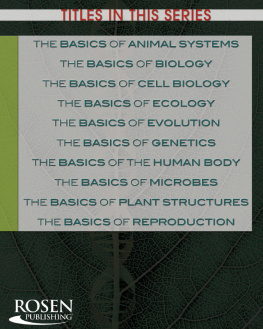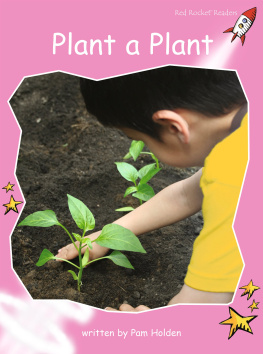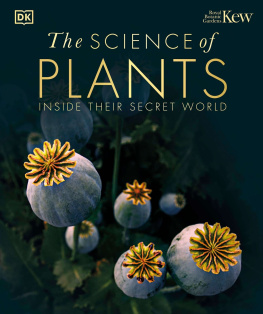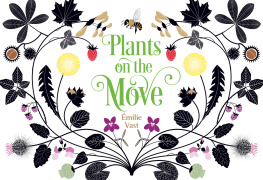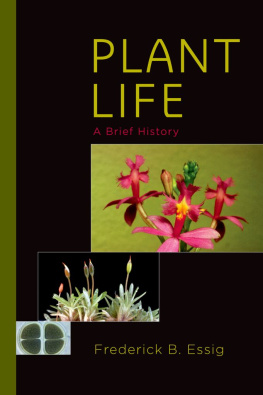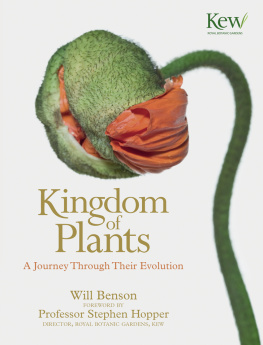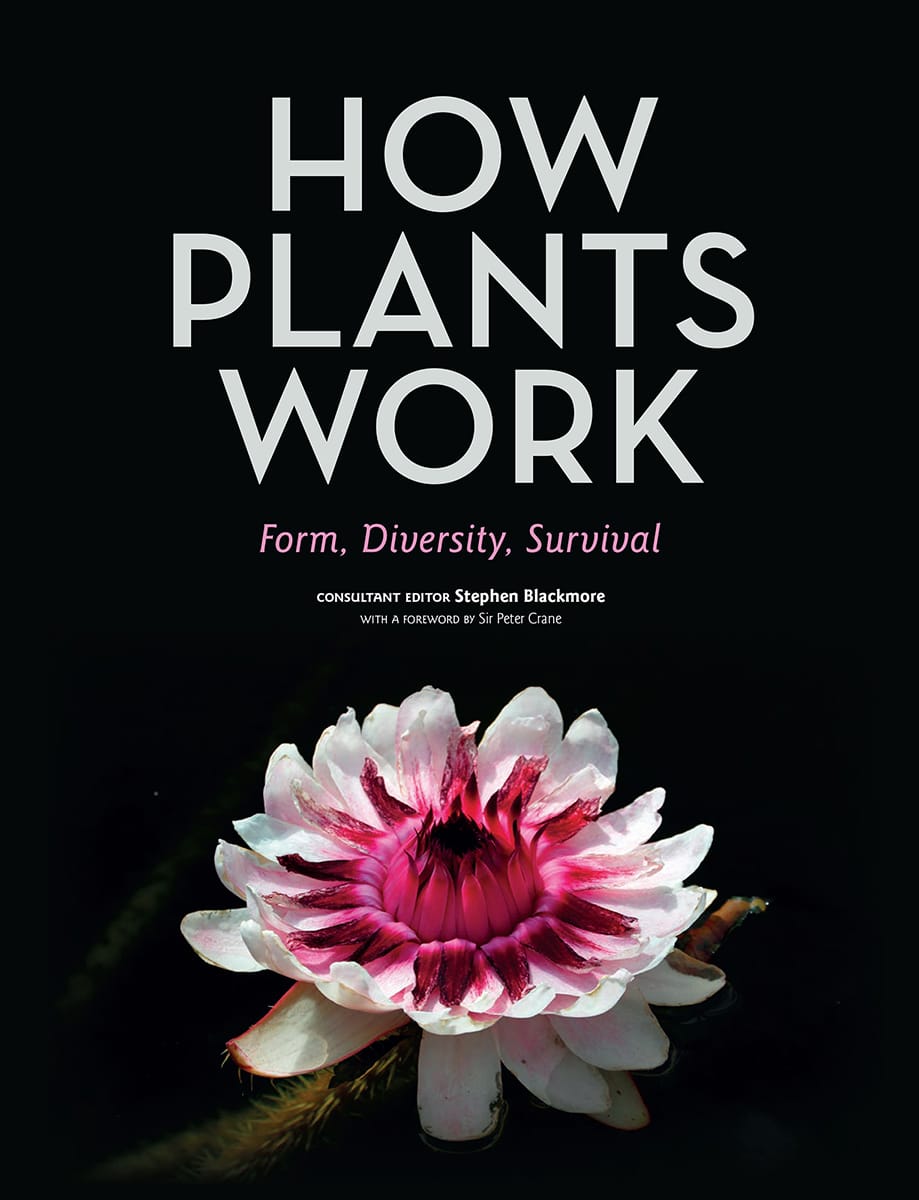Contents
Guide
HOW PLANTS WORK
Form, Diversity, Survival
CONSULTANT EDITOR Stephen Blackmore
WITH A FOREWORD By Peter Crane

Contributors
and consultant editor
Stephen Blackmore CBE, VMH, PHD, FRSE
Queens Botanist and Honorary Fellow, Royal Botanic Garden Edinburgh, United Kingdom
Dr Stephen Blackmore completed his PhD at the University of Reading in the United Kingdom. He then worked on Aldabra Atoll in the Indian Ocean, before being appointed Lecturer in Biology and Head of the National Herbarium and Botanic Gardens at the University of Malawi. In 1980, he was appointed Head of Palynology at the Natural History Museum in London. He was the 15th Regius Keeper of the Royal Botanic Garden Edinburgh from 1999 until 2013, and was appointed Her Majestys Botanist in Scotland in 2010.
Andrew Drinnan PHD
School of BioSciences, University of Melbourne, Australia
Dr Andrew Drinnan is an Australian botanist who completed his MSc and PhD in the School of Botany at the University of Melbourne. After several years at the Field Museum in Chicago, he returned to the University of Melbourne in 1990, where he is now Associate Professor in the School of BioSciences. His research involves palaeobotany and the fossil record of plants, particularly in Australia and Antarctica, and the structure and development of living plants. He teaches a wide variety of plant science subjects at both undergraduate and graduate levels.
Taryn Bauerle PHD
School of Integrative Plant Science, Cornell University, United States of America
Dr Taryn Bauerle received her doctorate from the Pennsylvania State University and is currently an Associate Professor at Cornell University, an August-Wilhelm Scheer Professor at the Technische Universitt Mnchen and an Atkinson Center for a Sustainable Future Faculty Fellow. Dr Bauerles research addresses changes in whole plant water relations resulting from climate change, with a focus on root and rhizosphere responses to water stress.
Jarmila Pittermann PHD
Department of Ecology and Evolutionary Biology, University of California, United States of America
Dr Jarmila Pittermann received her doctorate at the University of Utah, and is currently an Associate Professor at the University of California, Santa Cruz. Her research focuses on plant water relations, ecophysiology, and the structure and function of vascular tissue through the prisms of ecology, evolution and climate change.
Timothy Walker MA, MHORT, PGDIPLATHE, FHEA, FLS
Somerville College, University of Oxford, United Kingdom
Timothy Walker read botany at the University of Oxford and then worked for 34 years in botanical gardens, including 26 years as Director of the Oxford Botanic Garden. He is now a lecturer and tutor at the University of Oxford, and has a particular interest in plant conservation, evolution, pollination and euphorbias.
Frederick B. Essig PHD
Associate Professor, Emeritus, University of South Florida, United States of America
Dr Frederick B. Essig received his BS in botany from the University of California at Riverside, and his PhD from Cornell University. He has studied the systematics of palms, Clematis and mosses. He was Director of the University of South Florida (USF) Botanical Gardens in Tampa and a member of the USF faculty until his retirement in 2010. He maintains an active research interest in the taxonomy of the mosses of Florida, and blogs regularly on many aspects of botany and wildflowers at botanyprofessor.blogspot.com.
Foreword
Peter Crane FRS
Plants are the foundation of human existence. They are our indispensible companions on this singular planet in the vastness of space. Our species evolved against a changing backdrop of forests and grasslands, and our bodies are shaped by millions of years of interactions with plants. Today, plants remain the ultimate source of all the chemical energy on which our day-to-day existence depends. And make no mistake, the present and future of all of humanity depends on the continuing miracle of photosynthesis, which provides food for us all.
Yet plants, with no voice of their own, are easy to take for granted. The direct connections between people and plants that once shaped all human lives are now obscured by the rise of modernity. Our specialized lifestyles push plants to the background, and with more than half of all people now living in cities, the lives of plants can seem increasingly remote.
This fascinating and richly illustrated book reintroduces us to the world of plants and the intricacies of their existence, including how they live, grow and reproduce. It is an intimate, close-up portrait that deepens our understanding of the commonplace and the exotic. At the same time, it reveals the beauty of plants in new ways. The diversity of plants is brought to life through exemplars that engage, and through insights that enrich. To borrow a phrase from Darwin, there is grandeur in this view of plants. I am sure you will enjoy it.
Even the smallest plants appear striking when highly magnified. The most widespread form of the common liverwort (Marchantia polymorpha ssp. ruderalis), found in man-made or disturbed habitats, has colourful scales that provide protection to its growing tips.
The foliage of ferns grows and unfurls in a characteristic shape, called a crozier because of its resemblance to the head of the staff carried as a symbol of office by a bishop. The small scales covering its surface provide protection as the frond grows.
Editors preface: the world of plants
A mid the hustle and bustle of our fast-paced lives, an everyday miracle is happening all around us, often unnoticed. Plants are working their silent and unobtrusive magic capturing the energy of the sun and powering life on Earth. At first glance, plants rarely seem to be doing anything at all, perhaps just swaying gently in the breeze. But look more closely, as this book does, and we soon discover that plants are hard at work. Absorbing minerals and water from the soil and carbon dioxide from the air, they are creating themselves, fuelling their growth with the products of photosynthesis.
Flowerheads of purple salsify (Tragopogon porrifolius) open only to expose their bright orange pollen in the morning and then close in the early afternoon.
The wonder of photosynthesis
This remarkable process, which creates carbohydrates and oxygen, began billions of years ago in the first single-celled marine algae. It made the oceans and then the atmosphere rich in oxygen, setting the stage for the evolution of millions of species of animals, including our own. Animals and plants face the same challenges: the need for food or a source of energy, and the need for a safe place in which to live and reproduce. Being solar powered, plants have solved the energy problem but, unlike animals, they must tackle the other challenges without moving from the spot they are rooted to.


